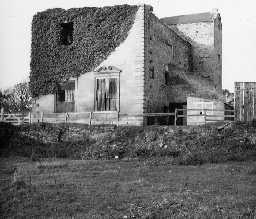Local History
Netherwitton (Northumberland)
Netherwitton parish lies in mid-Northumberland with the village of Netherwitton at the centre. Archaeologically, there is a range of features varying from the route of the Devil's Causeway Roman road to medieval villages remains.
The earliest evidence of human activity in the parish is a small stone hammer found near Longlee Farm. Another stone hammer found nearby has been dated to the Bronze Age. A number of Bronze Age burial mounds are clustered around Netherwitton village. One has been excavated on Bellion Farm and revealed a ring cairn covering a cist.
The oldest settlements in the parish are two defended enclosures at Gallowshaw. Another enclosure in the upland part of the parish at Beacon Hill may be either Iron Age or Roman. How the Romans influenced life in this part of Northumberland is not known, but the road called the Devil's Causeway runs through the parish and would have carried military traffic to the fort at Low Learchild.
There were medieval settlements across the parish and many survive as earthworks, such as Long Witton and Stanton. One of the larger settlements was Netherwitton. It was a market town in AD1293, created by the (unusual) separation of a barony between daughters. Only the Church of Saint Giles survives from the medieval village as it was cleared when the parkland to Netherwitton Hall was laid out. Another chapel set up at Stanton is now lost. A possible medieval cross was set up at Clavering's Cross.
The effects of the wars between England and Scotland meant that those who could afford it built defensive homes called tower houses. Stanton Old Hall began life as a fortified tower and later, a bastle was added for protection against Border reivers.
The later 17th and 18th centuries was an age of improvement, both in social and industrial landscapes. The wealthier residents of the parish invested in their homes and surroundings. Netherwitton Hall was built at this time and, for sport, shooting butts were built near Abshiel. The natural resources of the parish were also exploited. Quarries provided limestone for use in Stanton House lime kiln, coal was taken from Long Witton colliery and clays used in a tilery. Other enterprises included a cotton mill, set up in the 1780s at Netherwitton, but it quickly changed use to become a saw mill.
The earliest evidence of human activity in the parish is a small stone hammer found near Longlee Farm. Another stone hammer found nearby has been dated to the Bronze Age. A number of Bronze Age burial mounds are clustered around Netherwitton village. One has been excavated on Bellion Farm and revealed a ring cairn covering a cist.
The oldest settlements in the parish are two defended enclosures at Gallowshaw. Another enclosure in the upland part of the parish at Beacon Hill may be either Iron Age or Roman. How the Romans influenced life in this part of Northumberland is not known, but the road called the Devil's Causeway runs through the parish and would have carried military traffic to the fort at Low Learchild.
There were medieval settlements across the parish and many survive as earthworks, such as Long Witton and Stanton. One of the larger settlements was Netherwitton. It was a market town in AD1293, created by the (unusual) separation of a barony between daughters. Only the Church of Saint Giles survives from the medieval village as it was cleared when the parkland to Netherwitton Hall was laid out. Another chapel set up at Stanton is now lost. A possible medieval cross was set up at Clavering's Cross.
The effects of the wars between England and Scotland meant that those who could afford it built defensive homes called tower houses. Stanton Old Hall began life as a fortified tower and later, a bastle was added for protection against Border reivers.
The later 17th and 18th centuries was an age of improvement, both in social and industrial landscapes. The wealthier residents of the parish invested in their homes and surroundings. Netherwitton Hall was built at this time and, for sport, shooting butts were built near Abshiel. The natural resources of the parish were also exploited. Quarries provided limestone for use in Stanton House lime kiln, coal was taken from Long Witton colliery and clays used in a tilery. Other enterprises included a cotton mill, set up in the 1780s at Netherwitton, but it quickly changed use to become a saw mill.
N13810
UNCERTAIN
Disclaimer -
Please note that this information has been compiled from a number of different sources. Durham County Council and Northumberland County Council can accept no responsibility for any inaccuracy contained therein. If you wish to use/copy any of the images, please ensure that you read the Copyright information provided.
